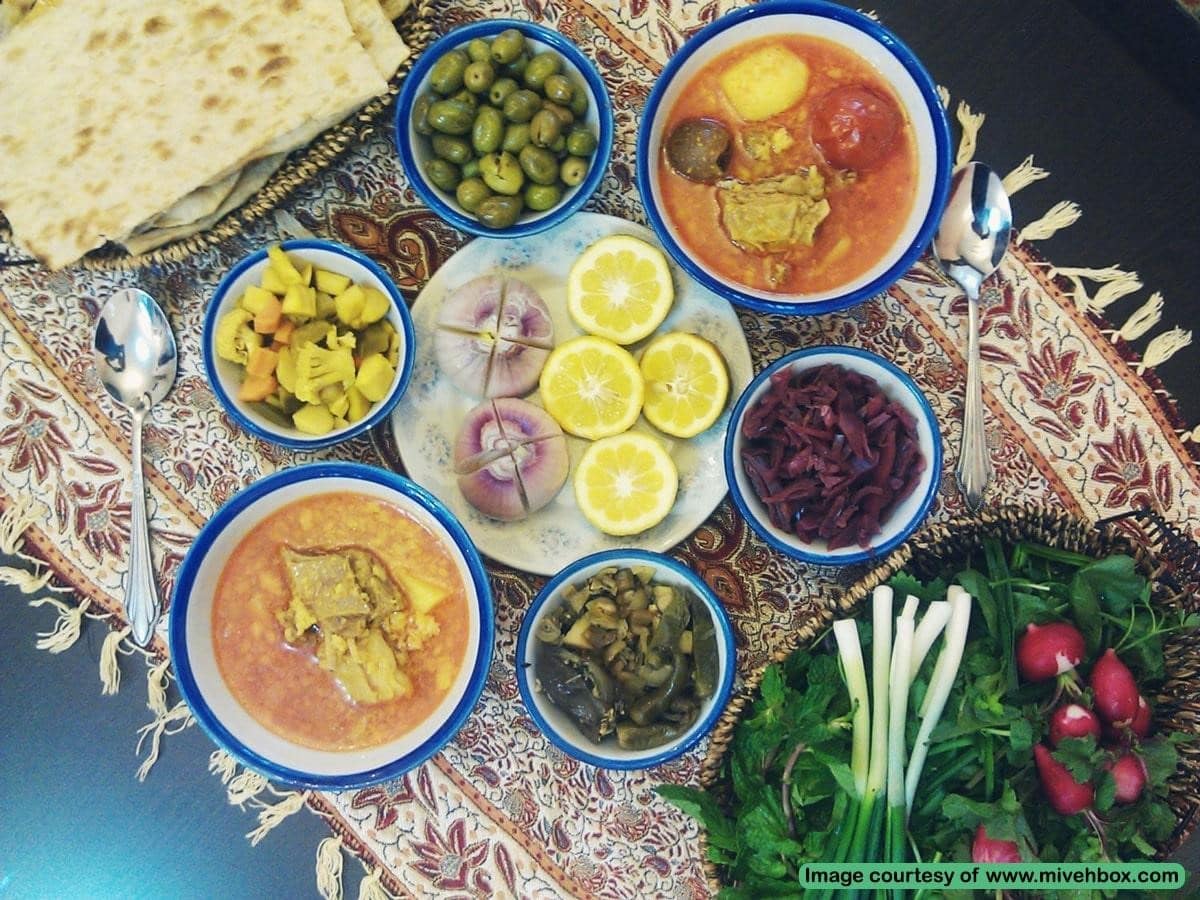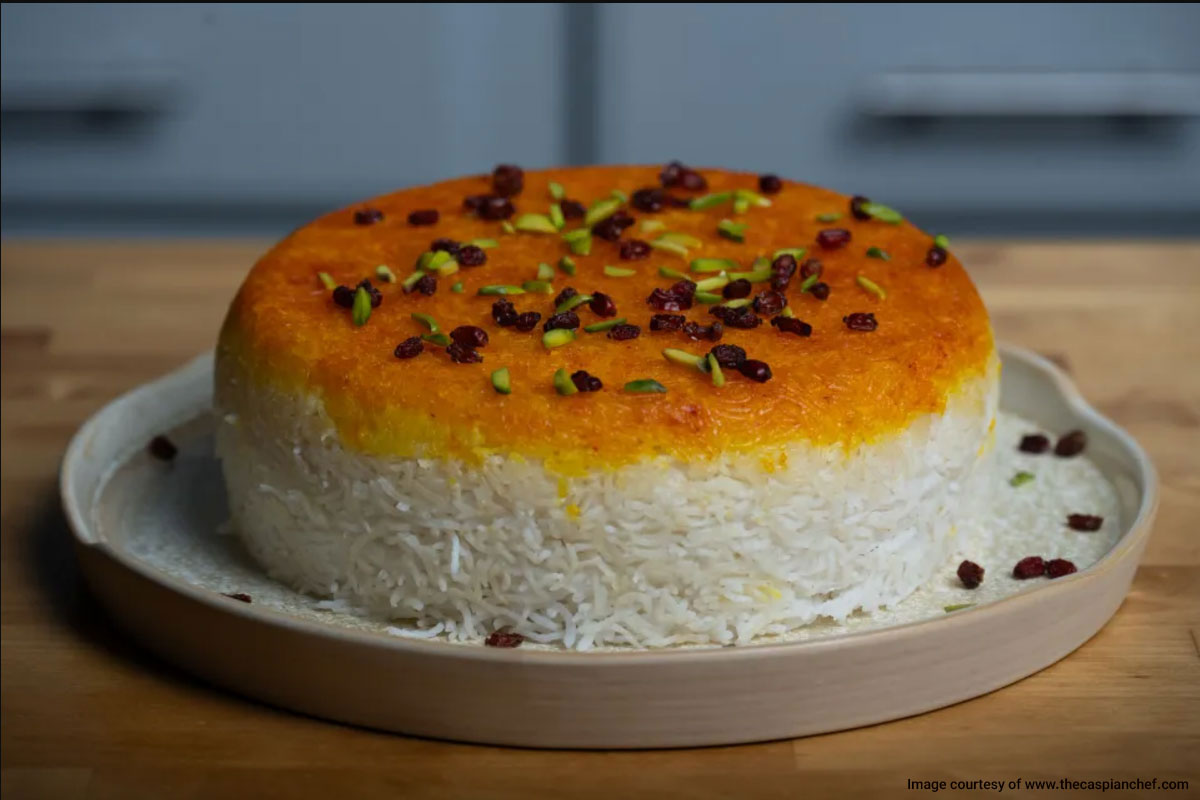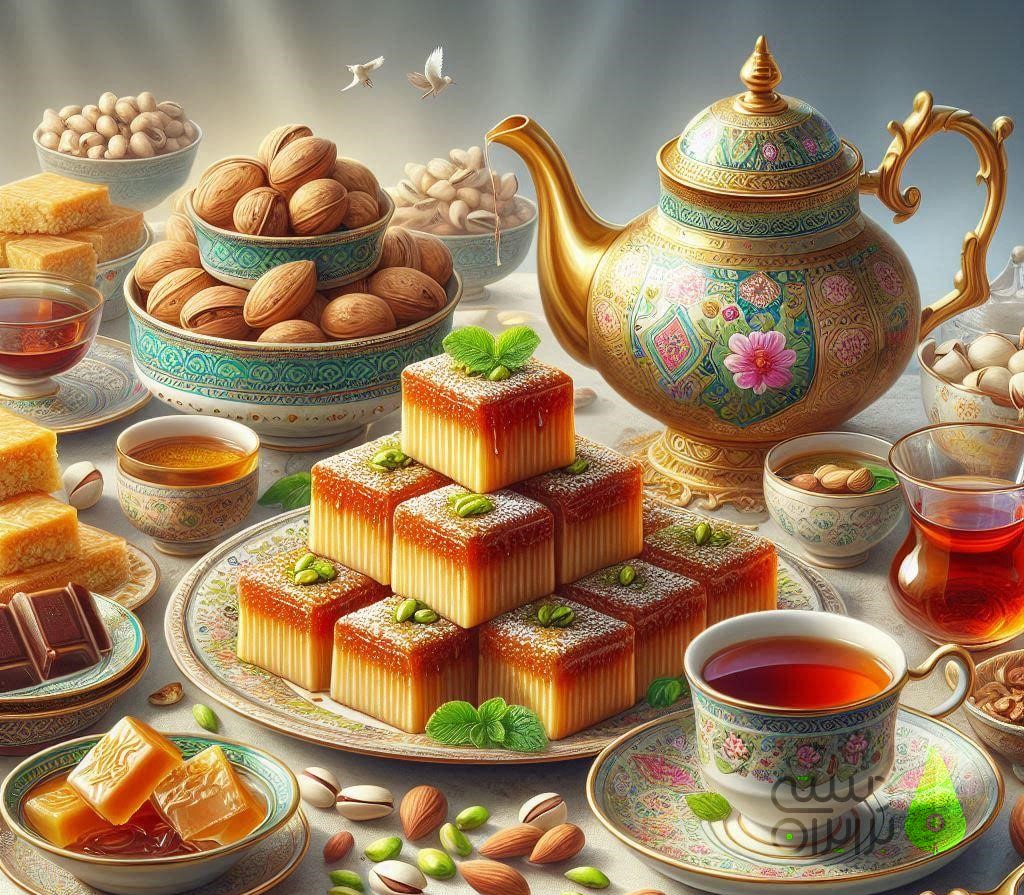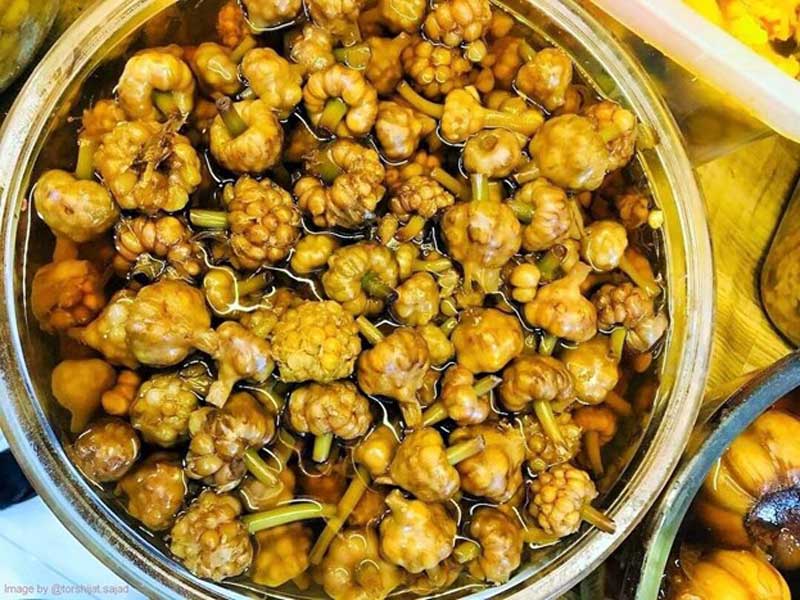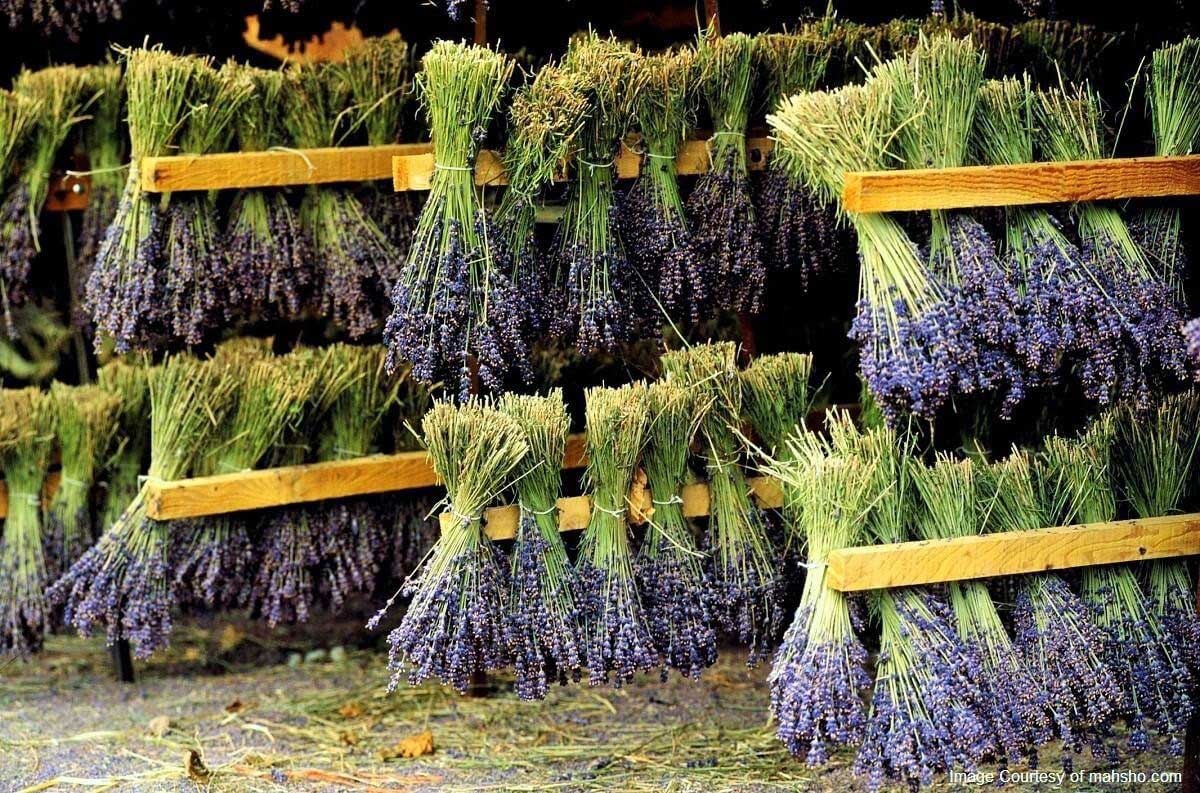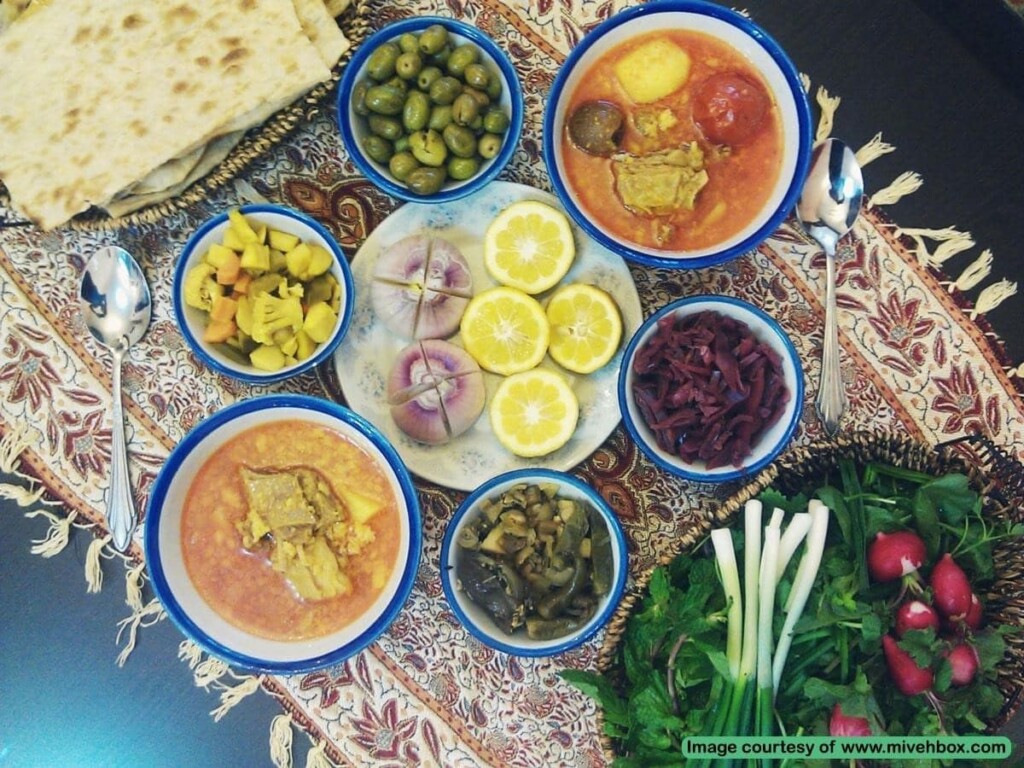
Iranian foods come in different types like Ash, Dolmeh, Khoresh, Polo, and more. Interestingly, all these food recipes have evolved in proportion to the different climates in Iran. However, nowadays most Iranian dishes are well-known all over the country, and there are only some local dishes that are specific to a neighborhood or region in Iran. This article aims to introduce tasty and healthy Iranian foods.
An Introduction to Iranian Food
Every nation has its own traditional foods. Iran is no exception. In general, Iranian foods are placed in various categories often based on the cooking technique.
As you know, cooking some authentic Iranian dishes can take a lot of time. Learning these methods and traditional Iranian recipes is fascinating but a full description would be out of the scope of this article, so we will only introduce different types of Iranian food:
Iranian Polo Rice or Persian Polo Rice Recipes
In most Iranian food recipes, most of the dishes are served with rice. In other words, rice is one of the main ingredients of Iranian foods. The twist here is that it is possible to cook rice in two different ways, Polo rice and Cholo rice, which is a question of personal taste. In the Polo recipe, preparing the Tahdig is an essential part of preparing rice, which is great to learn because the taste is amazing.
In some Polo rice recipes, vegetables or legumes are added to the rice after boiling for a few minutes and straining, which is called Makhloot (mixed) Polo. In contrast, the preparation of Cholo rice is done without adding any additional ingredients to the rice. In fact, Cholo rice is plain cooked rice. In the following, we will give a brief description of the recipes of various Iranian Polo dishes:
Baghali Polo or Fava Beans and Rice
Baghali Polo is one of the special dishes for many ceremonies and family gatherings. This dish is prepared with chicken or beef and is known as “Baghali Polo Ba Goosht” and “Baghali Polo Ba Morgh”. The use of veal (calf) meat in the preparation of Baghali Polo Ba Goosht means the cuts of meat retain their shape after cooking. Therefore, preparing this dish with veal is more authentic; However, the use of other meats such as chicken and mutton (lamb) meat does not change the taste of the food.
Sabzi Polo or Vegetable Rice
There is another Iranian food called Sabzi Polo, which can be served with beef, chicken, and fish. The vegetables used in this dish include coriander, parsley, dill, leek, and sometimes garlic leaves. Of course, there is also a type of Sabzi Polo with kidney beans in addition to vegetables and rice. This dish is known as “Sabzi Polo Semnani” which originated in the Semnan province.
Morassa Polo
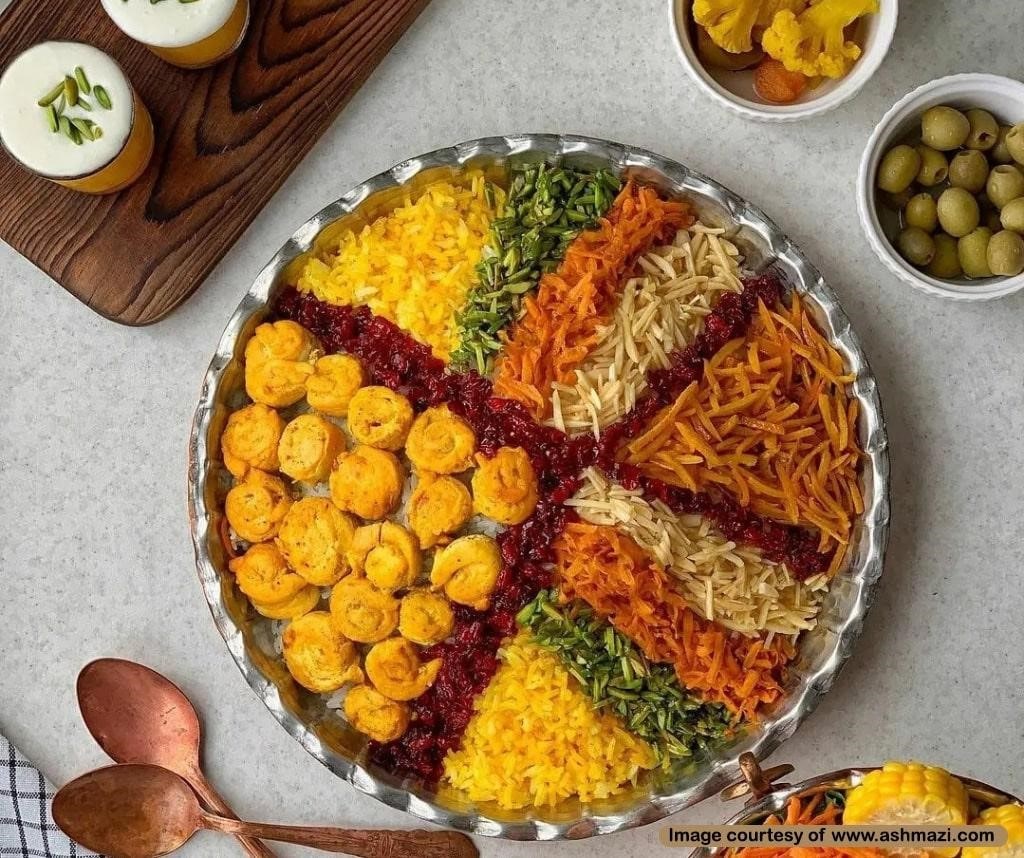
Another name for Morassa Polo is Polo Neginkar or bejeweled rice. This dish is considered a type of traditional Polo rice recipe that originated in the city of Qazvin. Of course, the method of preparing Morassa Polo is different in other provinces such as Fars and Khorasan. It is interesting to note that the reason for the name Morassa Polo is the use of many ingredients in decorating the dish.
Shirin Polo or Sweet Rice
Shirin Polo is one of the special traditional Polo rice recipes in Iran This dish is served at wedding ceremonies and big parties and has its own fans.
Zereshk Polo or Barberry with Rice
Zereshk Polo is one of the most popular types of luxury Polo recipes, which is usually served with chicken or lamb, shank, or flank beef.
Albaloo Polo or Sour Cherry with Rice
Albaloo Polo or Albalu Polo is another Iranian food recipe with Polo rice which is mostly served at parties and ceremonies. Of course, the recipe is simpler than other Polo and luxury food recipes.
Mash Polo or Mung Bean with Rice
One of the Iranian Polo rice dishes is Mash Polo. To prepare it, rice and mung beans are first cooked separately, strained, and mixed together.
Reshteh Polo or Traditional Noodles With Rice
To prepare Reshteh Polo, we use a kind of light or dark brown noodles “Reshteh Boo Dadeh” or traditional roasted noodles, and add it to the rice after straining so that it is steamed well. This dish is mostly served with cooked beef, hot onions, and fried dates or raisins.
Istanbuli Polo
Tomato or Gojeh in Persian is the main ingredient in Istanbuli Polo, and for this reason, it is also known as “Dami Gojeh”. Of course, in English-speaking countries, the food in question is known as “Mexican rice”.
Loobia Polo or Persian Green Bean Rice
Another type of traditional Persian mixed rice recipe is Loobia Polo or Lubia Polo. The main ingredients are rice, green beans, chopped or minced beef, tomato paste, and spices.
Nokhod Polo or Pea and Rice
Nokhod Polo is another Polo rice recipe. Peas are the main component. The peas and rice are cooked separately and mixed with other ingredients after straining.
Kalam Polo or Cabbage and Rice
Another Iranian Polo dish is Kalam Polo, which is prepared with a type of cabbage called Kohlrabi which is called “Qomi or Qomri cabbage” in Persian. In areas like Shiraz, the recipe includes aromatic vegetables such as dill, leek, parsley, green garlic, and a few basil leaves. In addition, the city is famous for its authentic Shirazi salad recipe, a salad often served with all kinds of Polo dishes.
Adas Polo or Lentils and Rice
This dish is a combination of lentils and rice with a high nutritional value. Other ingredients in addition to lentils usually include raisins and fried onions. Adding cooked chicken or fried minced beef is up to the cook.
Iranian Foods Served With Bread
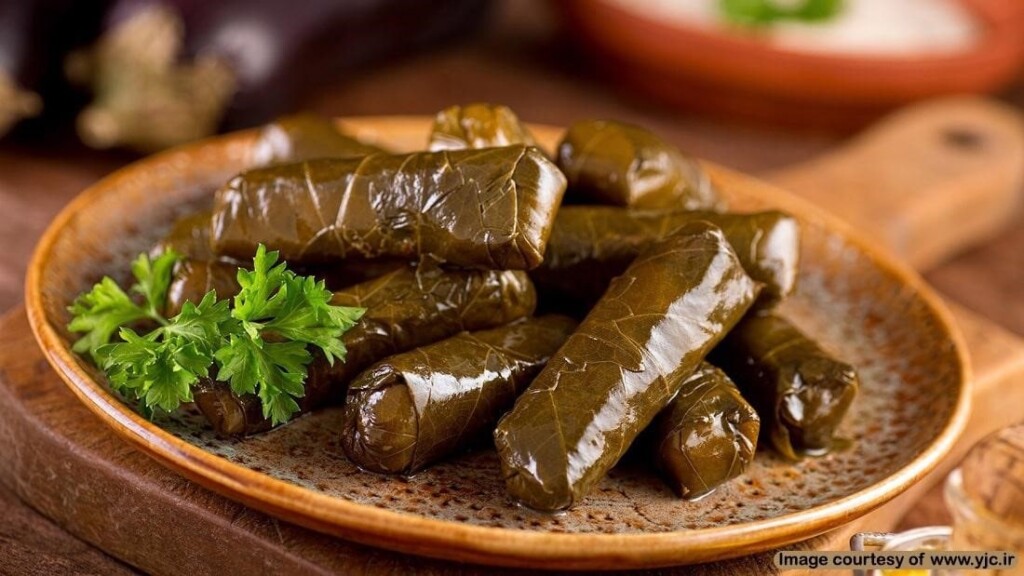
As everyone knows, all Iranian foods are not served with rice. Sometimes authentic Iranian foods are served with traditional local bread such as Lavash, Sangak, Taftan, Barbari, and even baguette. In the following, we have briefly described how to prepare these Nooni (served with bread) dishes:
- Kuku: It is one of the simple and delicious dishes that can be served with various types of bread.
- Koofteh: It is a traditional meatball served with bread. The most popular Koofteh recipe is Koofteh Tabrizi or Tabriz meatballs. This dish is usually served with Sangak bread, Sabzi Khordan (edible herbs), and yogurt. It should be mentioned that Tabrizi meatballs recipes are slightly different in different regions of Iran, but it is better to learn its original method.
- Shami Kebab: It is a type of kebab served with bread. It is made with minced beef and served with fried or fresh tomatoes.
- Roulette (Meat Rolls or Vegetable Rolls): Rolls are another type of food that gets served with bread in Iran. It can be made with beef or chicken or turkey. Of course, it is also possible to make pumpkin, spinach, and eggplant rolls.
- Dolmeh Barg mo (Stuffed Grape Leaves): To make Dolmeh Barg mo, the main ingredients including rice, beans, vegetables, and beef are cooked and mixed. The stuffing is wrapped inside grape leaves in different styles with different techniques depending on the cook. Then, the Dolmeh wraps are arranged in a pot and covered with a special sauce made of pomegranate molasses. The wraps are steamed until ready. This food is also a popular dish in the Armenian population in Iran. In general, Armenian cuisine is compatible with the taste and appetite of Iranians, and sometimes there are similarities between Iran food recipes and Armenian cuisine.
- Stuffed foods: Stuffed eggplant, stuffed pumpkin, stuffed tomato, and stuffed onion are among the types of bread dishes.
- Abgoosht or Ab Goosht: It is a traditional and authentic Iranian food that is mostly served with Sangak bread.
- Ash (Aush): Ash is another Iranian food served with bread. Ash variations are more popular in the cold regions of Iran. There are many traditional Iranian Ash recipes including Ash Reshteh or noodle Ash, Ash Miveh or fruit Ash, Ash-e Doogh or yogurt Ash, and Ash-e Torsh or sour Ash. Ashe Torsh is on the list of sour Iranian dishes, which has dedicated fans.
- Iranian Soup: There are many soup recipes in Iranian foods.
We can mention barley soup, vermicelli soup, and cream soup. - Kebab Tabei or Kabab Tabeh (Pan Kebab): It is a popular Iranian dish that can be served with rice or bread. This dish can be prepared with beef and chicken.
- Tas Kebab: It is another type of Iranian dish served with bread that can be prepared with different ingredients according to taste.
- Iranian Salad: There are various salads in Iranian foods that are served with bread. Some of these salads are Olivier salad, pasta salad, Caesar salad, and chicken and mushroom salad.
Iranian Khoresh or Khoresht Recipes
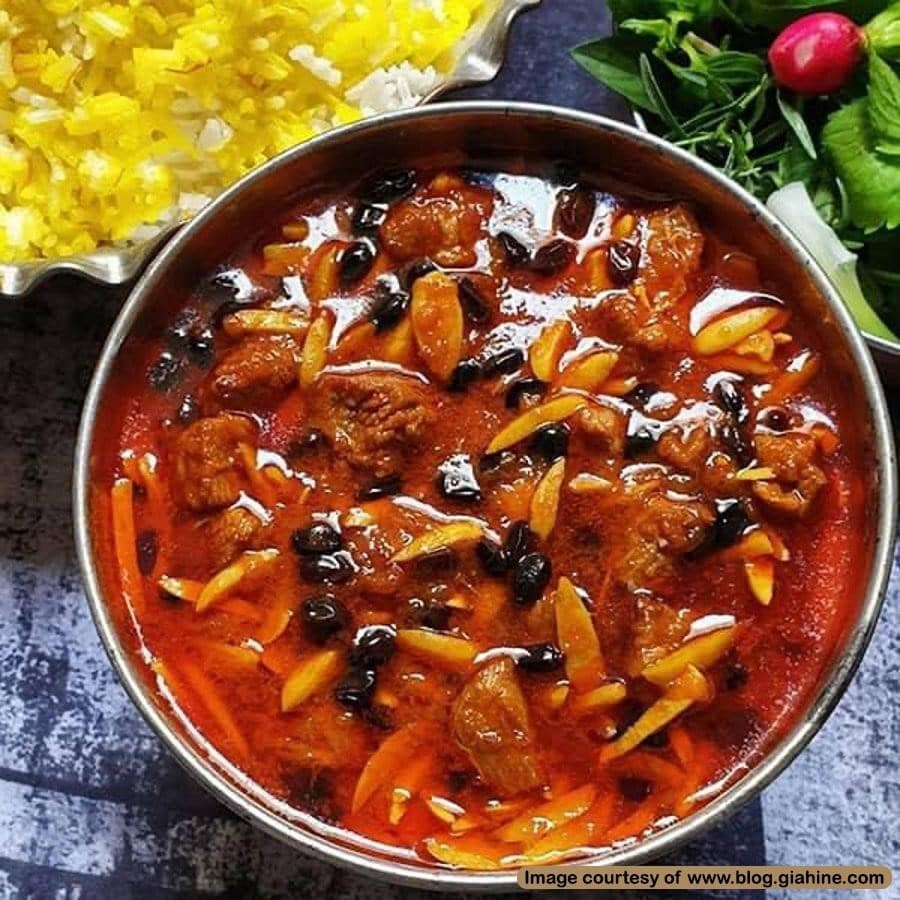
In Iranian cuisine, there are many Khoresh or Khoresht (stewed) recipes that are served with plain rice or Cholo. Some of these foods include:
- Khoresh Ghormeh Sabzi: It is a staple Iranian food widely recognized all over the globe. The main ingredients are beans, meat, aromatic herbs, and Limoo Amani (dried lime).
- Gheimeh or Gheymeh: Gheimeh roughly translates to chopped meat or hashed meat. This Iranian Khoresh is a largely popular Iranian food and is usually distributed as Nazri, an offering distributed for free during religious occasions. Therefore, many Iranian people are familiar with how to cook Gheimeh.
- Gheimeh Bademjan: This dish is almost identical to Gheimeh, but it has some additional ingredients such as eggplant and tomato.
- Pichagh-Gheimeh: Pichagh or Pichah Gheimeh is a traditional Iranian food native to the city of Ardabil, where eggs are one of the inseparable ingredients of this recipe. In the preparation of Pichagh Gheimeh, they use different ingredients such as veal or mutton, onion, sliced almonds, tomato paste, lemon juice or Limoo Amani, turmeric, and saffron.
- Khoresh Gheymeh Nesar: another type of Gheimeh that is native to Qazvin City. It is named Gheymeh or Gheimeh Nesar because of the inclusion of many ingredients in the recipe.
- Khoresh Fesenjān: Fesenjan or Fesenjoon is another popular Iranian food. Its main ingredients are walnuts and pomegranate molasses. Khoresh Fasanjan is a widely known recipe in most provinces of Iran, But Gilaki and Mazanderani Fasanjan recipes have a more pleasant taste due to their different cooking technique.
- Khoresht Karafs (Celery): This Khoresht is very similar to Ghormeh Sabzi, but in addition to a different mix of aromatic herbs, they use celery. As you know, celery is known for its high nutritional value in nutritional science. Of course, it is not too pleasant to consume raw celery for most Iranians. That’s why we include it in our food recipes.
- Ghalieh Mahi: This dish is one of the popular dishes in the southern regions of Iran and the cooking process is similar to Ghormeh Sabzi. with the difference that instead of beef, fish fillets are used in the recipe.
- Khoresh Bamieh (Okra): Okra stew is another delicious and distinct Iranian food, which is very popular in the southern and western regions of Iran. The cooking method of this Khoresh is similar to Gheimeh.
- Khoresh Khelal: One of the famous Iranian foods containing almond slices, beef, black barberry, tomato paste, and rosewater. The origin of this dish is considered to be the city of Kermanshah.
Simple Food Recipes in Iranian Food
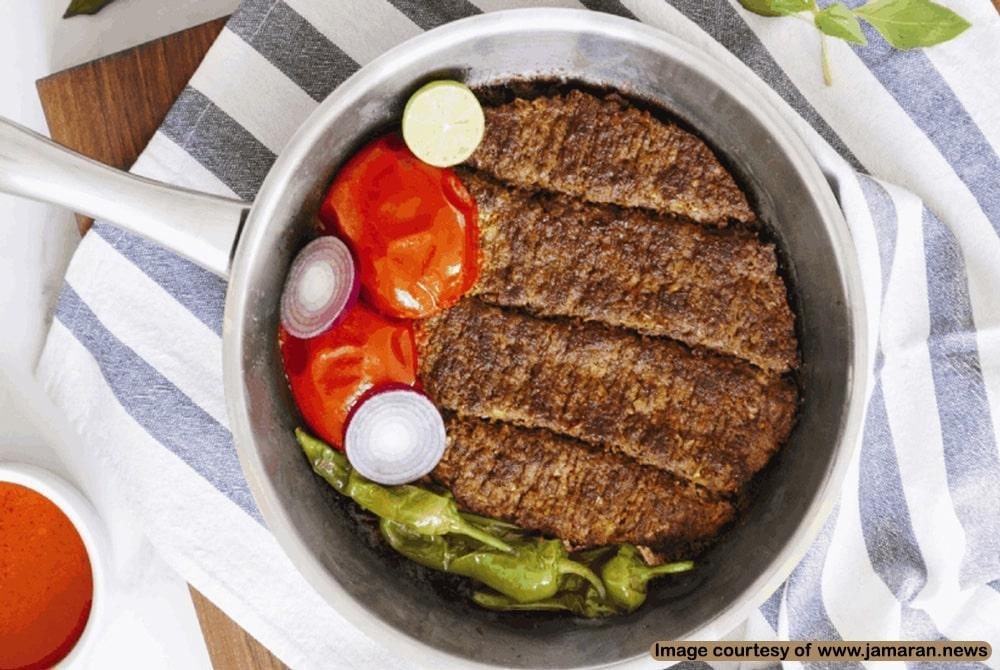
Sometimes, in special circumstances where there is not enough time to cook proper food, you can avoid buying fast food by making simple Iranian dishes. These foods are included in the list of fast Iranian foods that are easy to cook. In the following, we will introduce some of the available dishes:
- Cutlet: This dish is prepared using minced beef, potatoes, onions, eggs, flour, and spices.
- Kabab Tabei: a type of Iranian fast food that can be prepared with beef or chicken on the stove and does not require charcoal or barbecue.
- Persian Omelette: Undoubtedly, Persian Omelette is one of the fastest, simplest, and most popular Iranian dishes that every Iranian knows how to make. You can make this dish with just a few tomatoes and eggs along with your favorite spices.
Vegan and Vegetarian Iranian Food
The list of Iranian dishes without meat is very extensive. These foods are the favorite of vegetarians. In the following, some Iranian dishes for vegetarians and vegans are mentioned separately.
Iranian Vegetarian Recipes
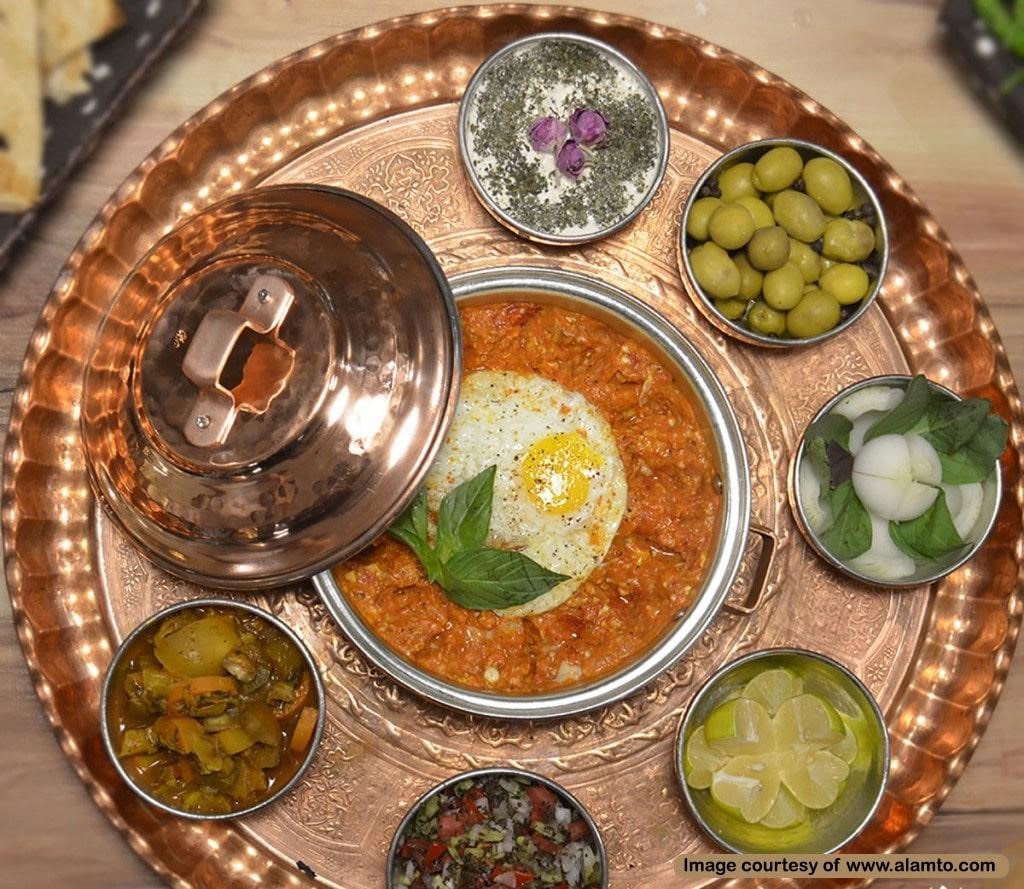
Many people in Iran have switched to a vegetarian diet in order to protect animals and prevent systematic animal slaughter. In the following, we have introduced the recipes for a number of Iranian vegetarian dishes:
- Kuku: In Iranian cuisine, Kuku is a mix of different ingredients that are chopped down and stirred into a thick paste. The paste is fried in oil in small pieces to make Kuku. In general, there are many types of Kuku in Iranian cuisine, which include: Kuku Sabzi (herbs), Kuku Bademjan (eggplant), Kuku Kadoo (zucchini), Kuku Esfenaj (spinach), and more. Kuku recipes are fast and easy; especially how to cook Kuku Sibzamini (potato).
- Mirza Ghassemii: Mirza Ghasemi or Mirza Qassemi is a popular Iranian food that is loved by many all over the country. It is interesting to note that the Mirza Ghasemi recipe was first invented by Mohammad Ghassem Khan Vali or Sardar Homayoun, the ruler of Rasht during the time of Naseruddin Shah.
- Kashk Bademjan: It is a light and simple dish that can be served as a side dish or the main dish in small gatherings. In the preparation of Kashk Bademjan, there are alternative ingredients that you can choose based on your taste.
- Meatless Khoresh Bamieh: This stew is one of the delicious and popular southern dishes, which can be turned into a vegetarian dish if you don’t add meat to it.
- Vegetarian Gheimeh with zucchini and split pea: Considering the benefits of zucchini for weight loss, switching meat to zucchini can be a good choice for vegetarians that want to try Gheimeh.
- Vegetarian Koofteh with eggplant: it is a delicious and healthy food for vegetarians, which has a lot of nutritional value.
- Khoresh Karafs without meat: As mentioned before, celery is a very unique plant that should not be neglected in vegetarian diets. To add this plant to your diet, you can prepare the stew without using any meat. This dish is also suitable for vegans.
- Mash Polo with dills: Mash (mung bean) Polo is a simple and delicious dish that can be easily prepared with usually available ingredients.
- Tofu with herbs: Tofu is a type of vegan cheese made from coagulated soy milk and can be a meat substitute for vegetarians. This type of cheese is naturally gluten-free, low-calorie, and cholesterol-free, and is a good source of iron, protein, and calcium.
- Cauliflower rice: It is a kind of gluten-free alternative for rice. When preparing it, you should be careful not to chop the cauliflower too thin.
- Khorak Nokhod Esfenaj (Chickpea and spinach dish): It is a simple and full vegetarian dish that is also cooked with chickpeas, spinach, potatoes, and other vegetables.
- Dampokhtak with yellow beans: It is one of the best traditional Iranian dishes, which is very similar to Istanbuli Polo.
Iranian Vegan Recipes
As you know, veganism is a type of diet that is against consuming and even buying animal products. Therefore, eggs and dairy products are not used in this diet. On the other hand, the vegetarian diet only opposes the consumption of animal meat. In the following, we describe how to prepare some foods for vegans:
- Sambooseh or Samosa: It is a type of vegetarian Iranian food that is stuffed with potatoes, leeks, parsley, red pepper, and various spices. Lavash bread is used for wrapping the stuffing.
- Khorak Adasi or Vegan Lentil Stew: It is one of the healthy Iranian recipes rich in protein and iron that can be useful for vegans.
- Vegan Dolmeh with Kalam (curly kale) or Barg-e mo: if this food is cooked with meatless stuffing such as beans, vegetables, and mushrooms, it can be a healthy vegetarian food.
- Vegan Ash or Aush: In Iranian cuisine, there are types of Ash that vegans can enjoy. Some of the types of Ash are Ash Reshteh (noodles), Ash Mash (mungbean), Ash Omaj, and Ash-e Miveh (fruit).
- Tahchin Gharch o Bademjan (eggplant and mushroom): If you crave Polo rice with vegetables, you can prepare and enjoy this dish. Learning how to cook Tahchin is one of the vital skills in Iranian cuisine.
- Vegan Soups: Many Iranian soups can be included in a healthy vegetarian diet for dinner. Some types of vegetable soup are Dal Adas or lentil soup, barley soup, pea soup, Iranian vermicelli soup, potato soup, and tomato soup.
Top Iranian Food Recipes for Special Occasions
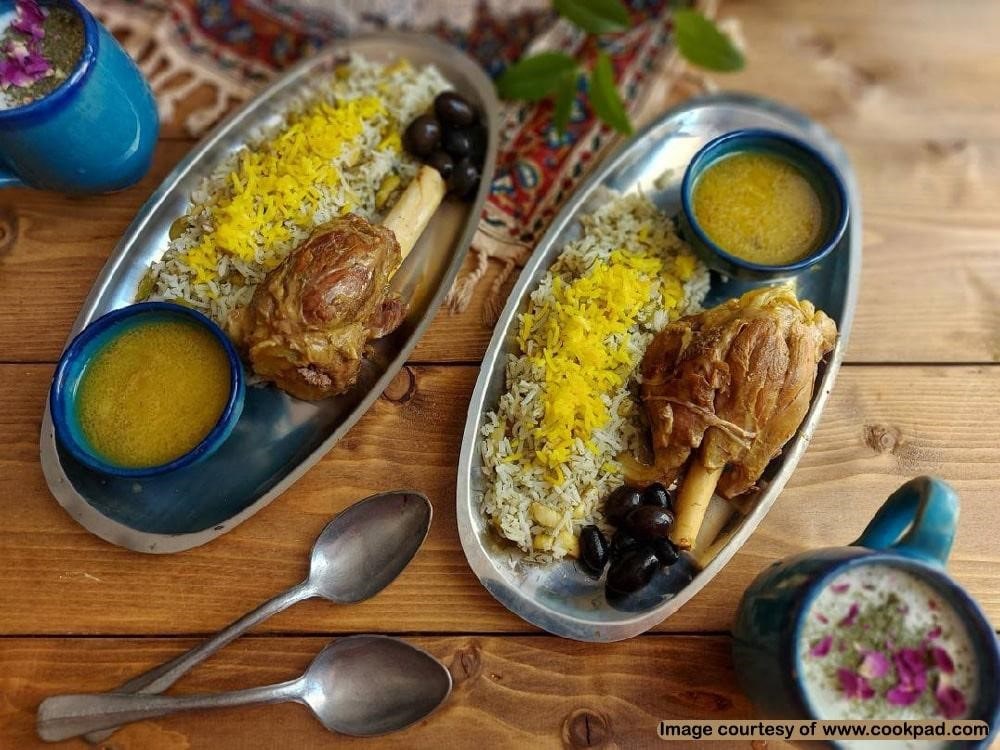
When you need to prepare Iranian dishes for parties and small gatherings, dishes such as Zereshk Polo and Khoresh Gheimeh are probably your first choices. But in Iranian cooking, there are many Iranian recipes that can be appealing to your guests. In the following, we will introduce some of these foods:
- Baghali Polo ba Goosht: it is a delicious dinner. The flavor is outstanding if it is prepared with fresh herbs. Therefore, it is better to make it in the spring.
- Albalu Polo with Meatballs: this dish is a delicious meal with a very beautiful appearance that can bring a special charm to your party table.
- Tahchin Morgh ba Esfenaj (spinach): It is one of the famous Iranian dishes with a straightforward recipe.
- Mazandarani Keshmesh Polo (rice with fried raisins): If your guests have a sweet tooth, you can serve Mazandarani Keshmesh Polo as a party dish.
Healthy Recipes for Cooking Iranian Food
In general, Iranian food recipes can be categorized into dry and moist methods, each with advantages and disadvantages. With modern health concerns, methods of cooking traditional Iranian foods have evolved. For this purpose, many healthy cooking methods have been introduced, which include:
Moist Cooking Methods for Iranian Food
In this style of cooking, it is common to use liquid or steam to cook food. In the following, we will review healthy cooking methods in this style:
- Blanching: submerging food ingredients such as fruits and vegetables in boiling water and then quickly placing them in cold water in order to preserve their color and texture;
- Boiling: bringing water to 100 degrees Celsius and cooking food in it;
- Braising: cooking food with the least amount of water;
- Poaching: submerging food in 70-80-degree water;
- Scalding: It is another method of wet cooking that is used to melt ingredients such as chocolate and sugar;
- Slow boiling: This method is used to cook hard texture foods at a temperature of 80 to 90 degrees;
- Steaming: It is a method in which food is cooked indirectly with steam and does not come into contact with water. Cooking food in this way requires a lot of time, but this method of cooking preserves nutritional value to a large degree;
- Low heat cooking: It is similar to the slow boiling method, except that the consistency of the cooking liquid is higher. This liquid is used as a sauce.
Dry Cooking Methods for Iranian Food
In dry cooking methods, instead of using liquids and steam, heat is transferred through direct contact with the food. Healthy methods for dry cooking Iranian food include:
- Frying: It is a method to preserve food moisture;
- Frying with little oil: in this method, the depth of the pan used and the amount of food is very important;
- Deep frying: To prevent extreme oil saturation of the food, the temperature of the oil is raised to 160 degrees Celsius in this method;
- Cooking in Tanoor (traditional furnace for cooking) or oven: in this method, the internal humidity of the food is preserved. This method is used for all kinds of cakes and sweets;
- Roasting: the method of cooking food at a temperature greater than 200-500 degrees Celsius;
- Grilling or grilling: in this method, food can be cooked with high heat using wood or charcoal or gas flame.
UNESCO Recognition of Rasht, The Creative City of Gastronomy
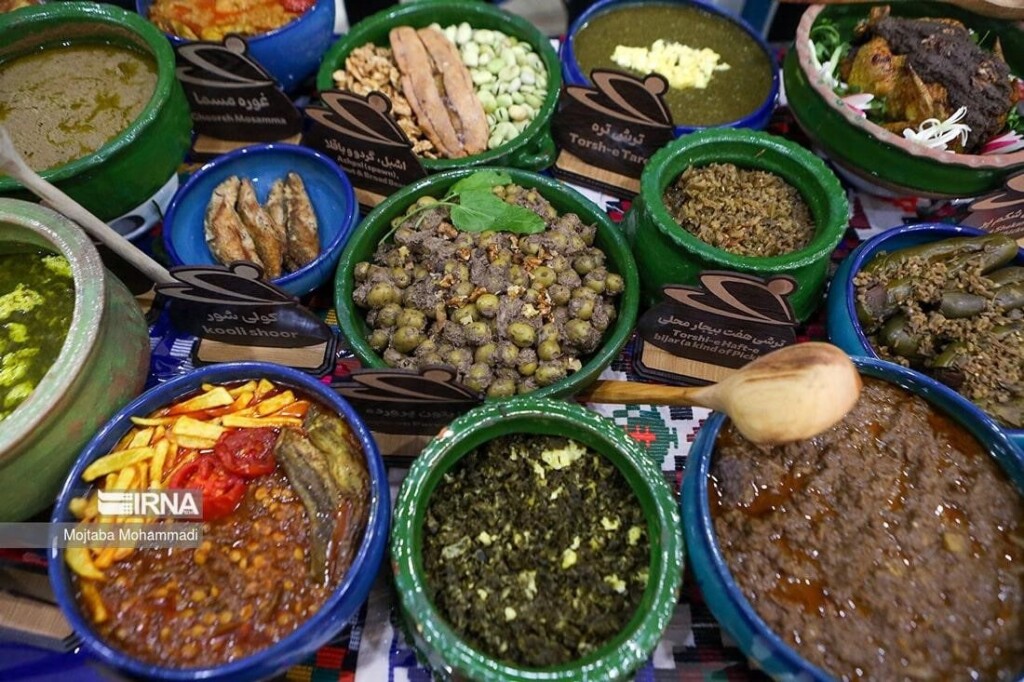
The methods of cooking Iranian food are part of Iran’s intangible heritage that can represent Iranian culture to the world. For this purpose, registering the recipes of authentic Iranian food in the UNESCO list can be considered an effective step to achieve this goal. However, unfortunately, no action has been taken in this case and we do not have any food to introduce as Iranian food recognized by UNESCO. This issue has caused some neighboring countries to submit cases including authentic Iranian foods to UNESCO which recognizes them as their intangible cultural heritage.
In 2014, Rasht City was recognized by UNESCO as the first creative city in Iran, a city of Gastronomy. In that year, about 230 food items were submitted to UNESCO in Rasht, which included appetizers, main dishes, and desserts. Currently, the number of registered foods in Rasht, Gilan, and other parts of this province is about 300.
After Rasht, the city of Kermanshah has been recognized as the second creative City of Gastronomy by UNESCO. In general, 49 cities in the world are known as creative gastronomy cities, of which Rasht and Kermanshah are Iranian examples.
Iranian Dishes for Different Celebrations
Iranian dishes are usually cooked during the country’s traditional holidays and celebrations to represent Iranian culture in addition to a hearty food experience. In the following, we will introduce special foods for different celebrations:
Iranian Food for Yalda Night
Shab-e Yalda or Yalda night is known as the longest night of the year in Iranian culture, and Iranians worldwide celebrate this occasion. It is interesting to note that the customs of Yalda night are different in different regions of Iran and are rooted in the ancient culture and tradition of the Iranian population. In the following, we will introduce a number of Iranian dishes from different cities and provinces of Iran that are traditionally served on Yalda night:
- Shiraz Yalda Night Food: Kalam Polo with Shirazi salad and Ash-e Anar (pomegranate);
- Khuzestan Yalda Night Food: Khoresht Ghalieh Mahi and stuffed fish;
- Mazandaran Yalda Night Food: Khoresh Morgh Nardoni (chicken and pomegranate), Boorani Esfenaj (spinach and yogurt), Kuku Sabzi, Sabzi Polo ba Morgh(chicken), stuffed turkey or fish (Caspian Kutum), Khoresh Fesenjan with chicken or duck;
- Qazvin Yalda Night Food: Anar Polo (pomegranate rice) and Gheimeh Nesar;
- Tabriz Yalda Night Food: Tabrizi meatballs and Khashil (pudding-like dessert);
- Sanandaj Yalda Night Food: Dolmeh Barg-e mo (grape leaves) and Dolmeh Barg-e Kalam (curly kale);
- Gilan Yalda Night Food: Khoresh Anar Bij (pomegranate strew) or Sabzeh Fasanjan, pomegranate and eggplant stew, pomegranate meatballs and Khoresh Morgh-e Torsh (sour chicken).
Iranian Food for Nowruz Night
Nowruz is another ancient Iranian tradition with a dedicated ceremony. Iranians usually cook special foods on the night of Eid, as mentioned below:
- Sabzi Polo with smoked fish, stuffed fish, Reshteh Polo (rice with noodles), Dolmeh, Torshi Tareh ba Mahi (sour herb stew with fish), Ab Goosht, Koofteh (meatballs), Kalam Polo, and more. The easiest traditional Nowruz dish is Kuku Sabzi.
Iranian Food for Sizdah Be-dar
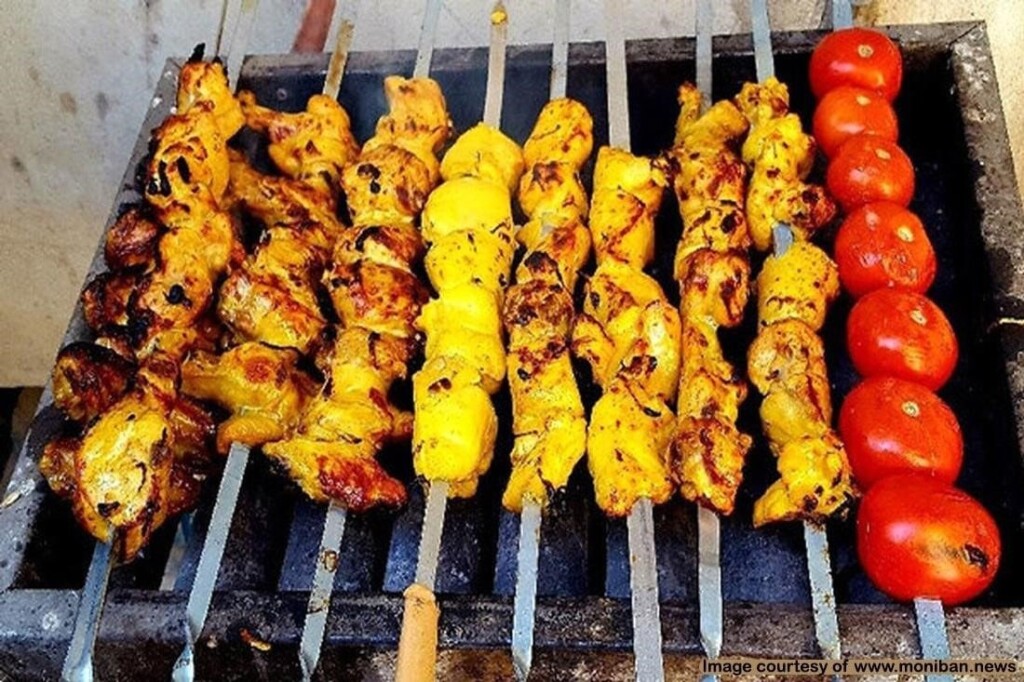
In many regions of the country, it is believed that the food for Sizdah Be-dar should be cooked with wild herbs. For this purpose, it is very popular to cook different types of Ash on this day, among which we can mention Ash-e Doogh and Ash Reshteh. Of course, in addition to cooking various types of Ash, it is also common to serve meat-based dishes, among which the following dishes can be mentioned:
- Joojeh Kabab (marinated chicken) grilled outdoors, Cholo Goosht, Shivid Polo ba Morgh (rice and dills with chicken) and… Among these, Kabab Koobideh is universally popular.
Iranian Food for Ramadan Month
There are many religious occasions in our country, and Ramadan is one of them. On the nights of Ramadan, Iranian people spread colorful Iftar and Suhur Sofreh to serve the fasting people that includes different dishes. In the following, we have introduced a few types of Iranian Iftar dishes and Suhur dishes separately:
- Iftar Food: Appetizers such as Ash Sholeh Ghalamkar, Ash Reshteh, chicken soup, Ash Jo (barley), Halim Bademjan, Sholeh Zard (saffron rice pudding) and main dishes such as Shami Pook, Khoresh Aloo Esfenaj, wheat Haleem and Zereshk Polo ba Morgh.
- Suhur Food: Albalu Polo, Khoresh Bamieh (Okra stew), Pichagh Gheimeh Stew, Khoresh Loobia Chiti (Pinto Bean Stew), Khoresht Kangar (Artichoke Stew) and Keshmesh Polo Mazandarani.
Iranian Food; Experiencing Authentic Flavors with Your Family
Iranian cooking methods are among Iran’s intangible heritage. In addition, they also represent Iranian culture. You can experience the cuisine of different Iranian ethnic groups while traveling across Iran. Destination Iran hopes that by introducing a variety of Iranian dishes, we can interest our audience in learning authentic Iranian food recipes.
Frequently Asked Questions About Iranian Food
If you have a question about Iranian food that you did not get the answer to by reading this text, you can read the frequently asked questions in this section. If your question remains unanswered, be sure to ask it in the comments section below the post.
What are the most popular meat dishes in Iran?
Among Iranian meat-based recipes, a large number of the dishes are Khoresh (stew). Of course, if you need to prepare a variety of meat dishes without rice, you can use other dishes; Including
Ab Goosht, Shami Kababi, Joojeh Kabab (grilled marinated chicken), Dizi, Kaleh Pacheh (cooked sheep’s head and hooves), Khorak Goosht (vegetable and meat stew) and Kabab Tabei.
Are Iranian cooking recipes the same everywhere?
Each authentic Iranian dish has a few different versions that have originated in a specific location. You can choose one of them based on your taste and personal experience.
What are Majlisi or luxury Iranian foods?
High-quality Iranian dishes have a long list, some of which are known as Majlisi or luxury dishes. Some of these foods include
Kabab Koobideh, Baghali Polo ba Mahicheh (rice and beans with beef), Khoresh Ghormeh Sabzi, Khoresh Fesenjan, Zereshk Polo, Gheimeh, Dizi Ab Goosht and Tahchin.
What is the oldest Iranian food?
It seems that Kalehjoosh is one of the oldest Iranian recipes that has been around for the longest.






